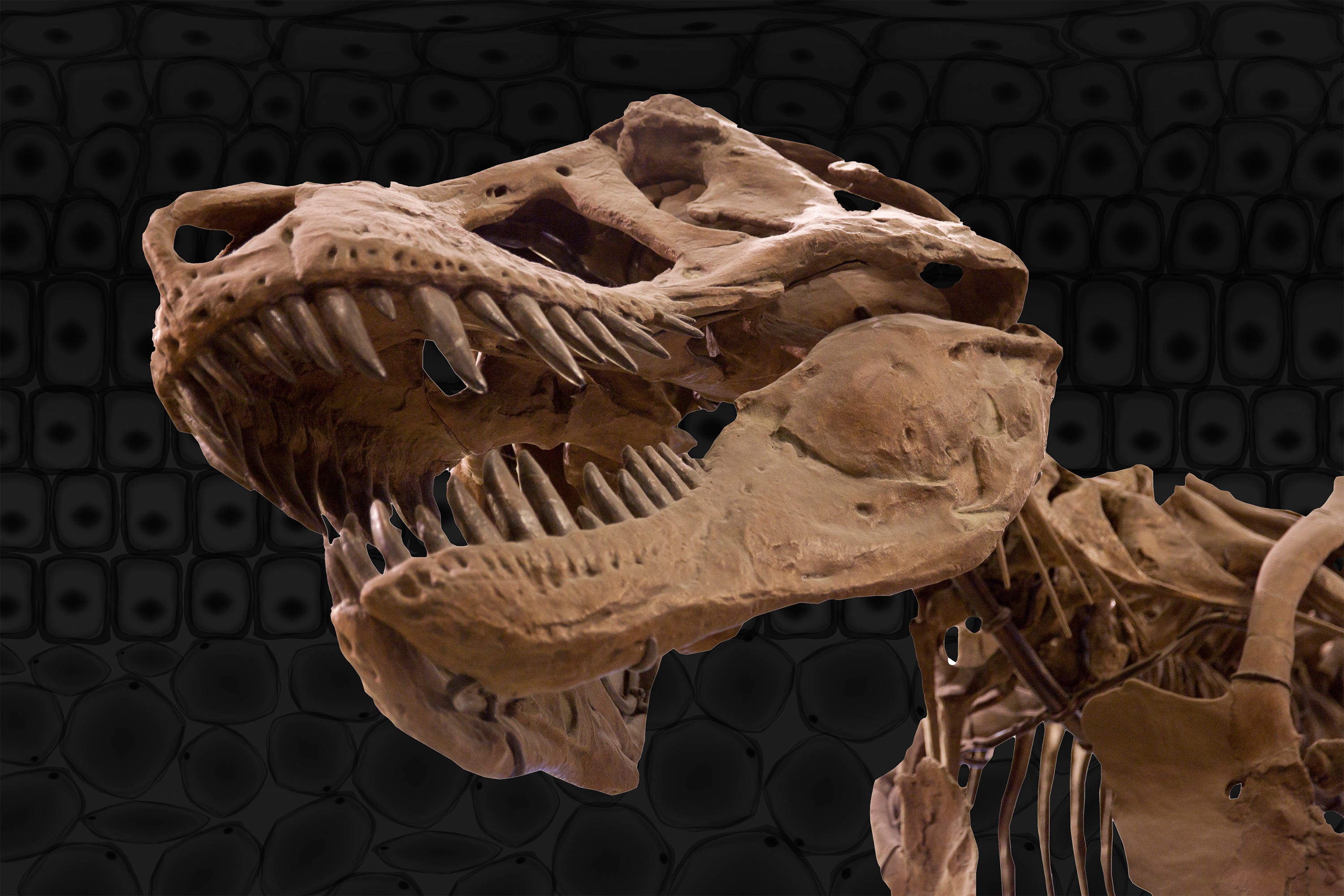
MIT chemists explain why dinosaur collagen may have survived for millions of years
Images for download on the MIT News office website are made available to non-commercial entities, press and the general public under a Creative Commons Attribution Non-Commercial No Derivatives license. You may not alter the images provided, other than to crop them to size. A credit line must be used when reproducing images; if one is not provided below, credit the images to "MIT."
Previous image Next image
Collagen, a protein found in bones and connective tissue, has been found in dinosaur fossils as old as 195 million years. That far exceeds the normal half-life of the peptide bonds that hold proteins together, which is about 500 years.
A new study from MIT offers an explanation for how collagen can survive for so much longer than expected. The research team found that a special atomic-level interaction defends collagen from attack by water molecules. This barricade prevents water from breaking the peptide bonds through a process called hydrolysis.








